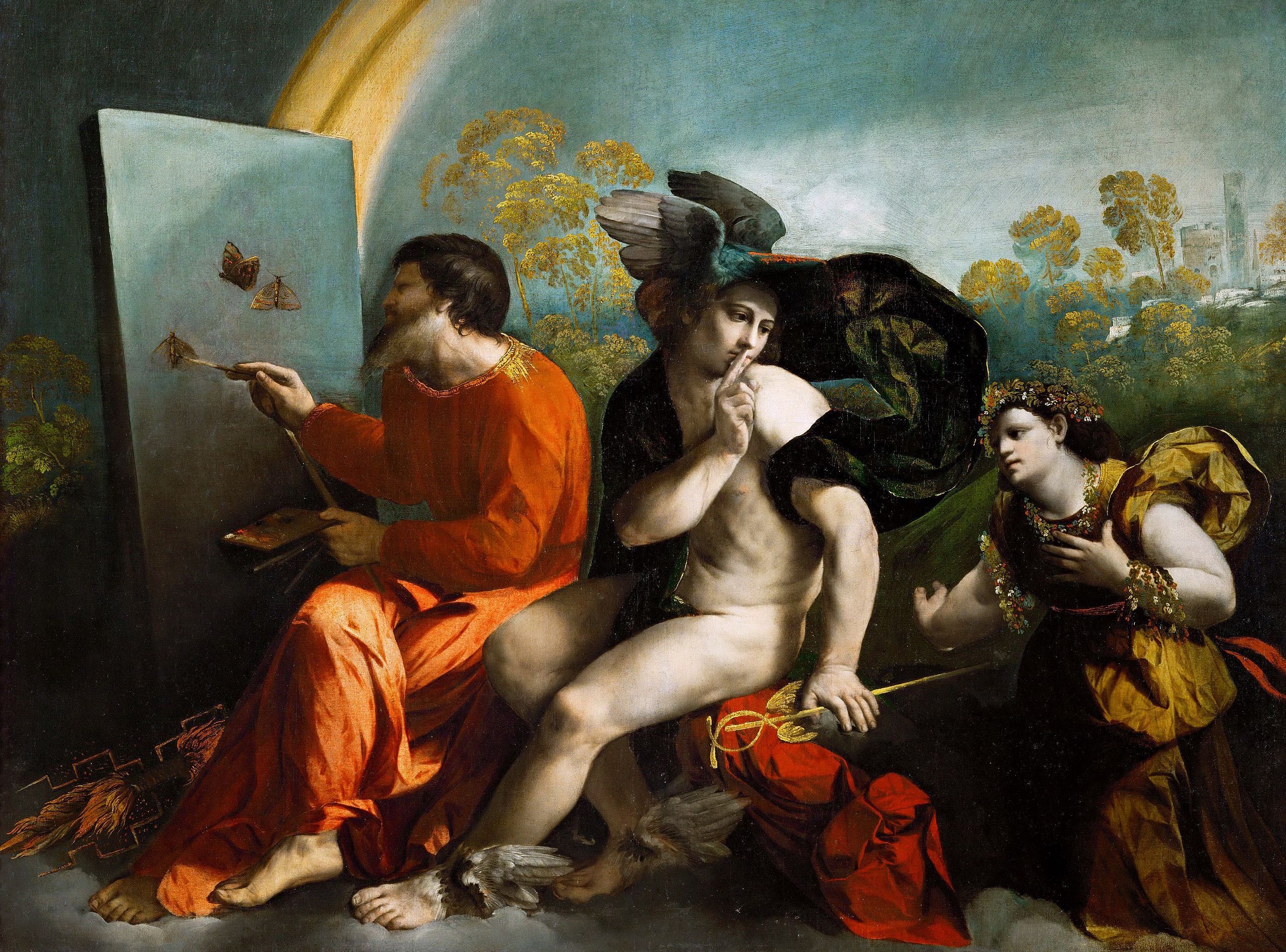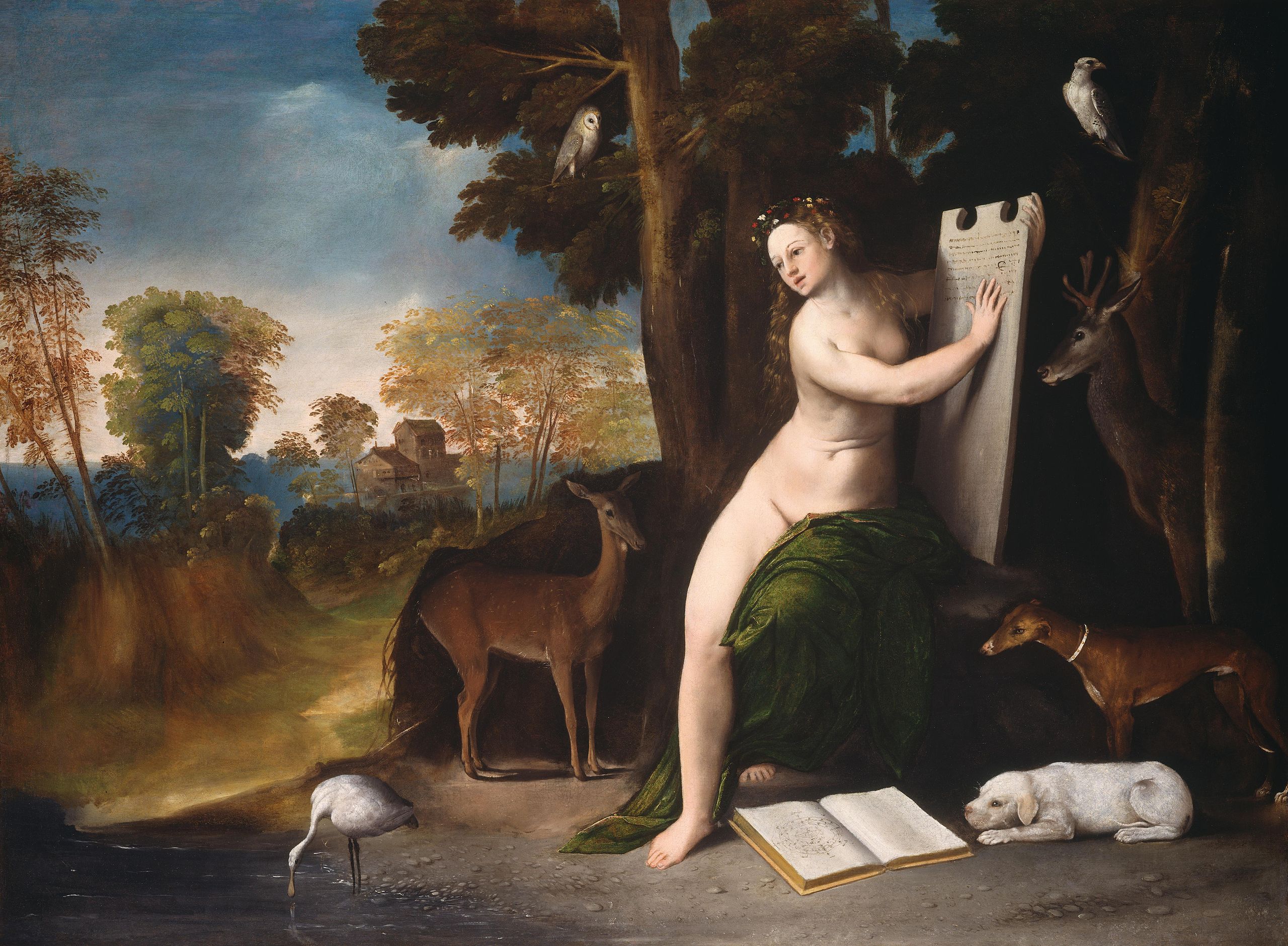Look at the painting. Isn't it a bit strange?
Today's work is one of the complex, allegorical, and esoteric paintings that were fashionable at the court of Ferrara in Italy in the early 16th century. Amazing writers, among whom Ariosto stood out, were hosted at court. The literary inspiration for the painting comes from Virtus, an interlude by the famous architect Leon Battista Alberti, which the creator of the painting reinterprets in a dreamlike key.
Dosso Dossi constructed a painting with three main figures linked by continuous references, in a structure reminiscent of Venetian art but denser with symbols and hidden messages, which even overshadow the beauty of the figures or the landscape—here reduced to a synthetic hint against a cloud-filled sky.
On the left, Jupiter, recognizable by the lightning bolt at his feet, is depicted in a creative act—that is, painting butterflies on a canvas. The butterfly is a symbol of the volatility of thought, just as the rainbow appearing behind the easel is an emblem of the evanescence of ideas. In painting, he implies that at the origin of every creation there must be an inspiring idea, tied to a concept of universal order. His red robe, lit dramatically, creates a strong splash of color, which connects to the same-colored drapery on which Mercury, the second central figure, is seated. His attributes are also clear: the winged helmet (petasos), winged sandals, and the golden caduceus, which expressed his esoteric power to lull and awaken the living. He is the god of Sleep and the guide of dreams (dux somniorum), and his gesture of invoking silence is meant to restrain the impetuousness of the third figure—the woman approaching the threshold of Olympus.
She has often been identified as Virtue in the past, but she does not possess its iconographic features. Her image corresponds more closely to that of Aurora (Dawn), as shown by her typical attributes: a head crowned with flowers, garlands adorning her bare arms, and a flowing, wind-blown gown. According to a tradition found even in Dante, Aurora is the one who, at her morning appearance, dispels sleep, and Mercury prevents her from entering Olympus because he wants to protect Jupiter’s sleep. Jupiter is painting with his eyes closed, and Dossi, following the Platonic analogy between dreams and painting, alludes to the fact that the king of the gods is dreaming. Jupiter bears the features of Duke Alfonso I, and the painting—destined for the duke’s bedroom in the Castle of the Belvedere—is an allegorical defense of sleep and dreaming, in a space dedicated to the rest and amusements of the d'Este lord, the ruler of Ferrara.
P.S. How well do you know Greek (and Roman) gods? Take our Greek Mythology QUIZ!
Dear DailyArt users, we are planning to add a new language version to our app, and we would love to hear your thoughts! Which language should we choose next? Share your opinion with us by filling out this short survey!


 Dosso Dossi
Dosso Dossi